Animals
Struck by falling sheep
We've previously reported about people accidentally struck by suicide jumpers (See Death at the Cathedral). But being struck by an apparently suicidal sheep leaping from a bridge is a novel twist on the phenomenon.
London Daily Telegraph - July 30, 2001
Posted By: Alex - Mon Jun 19, 2023 -
Comments (2)
Category: Accidents, Animals, 2000s
Kicked To Death By A Camel
According to the article "Camel-Related Deaths" in The American Journal of Forensic Medicine and Pathology:Some searching for examples of camel-related deaths led me to discover a book with the oddball title, Kicked To Death By A Camel, published in 1973.

The author, Clarence J.L. Jackson, was a pseudonym for Richard W. Bulliet, a history professor at Harvard (and later Columbia University). On his Amazon page he writes:
Sounds like it could be a fun read. If you're interested, you can either buy a used copy or check it out via archive.org.

Shreveport Times - Sep 23, 1973
Posted By: Alex - Mon May 22, 2023 -
Comments (1)
Category: Animals, Death, Books, 1970s
Follies of the Madmen #562
New kind of carpet is immune to elephant manure. Don't ask where that elephant's trunk goes in the final scene.
Posted By: Paul - Thu Apr 20, 2023 -
Comments (0)
Category: Animals, Domestic, Advertising, Public Indecency
Sydna Yokley, Rodeo Prodigy
Sydna--seen here in a 1939 LIFE magazine feature--debuted on the rodeo circuit at age 12. She had an outstanding career (see her FIND A GRAVE obit) but died young--under the hooves of her favorite horse.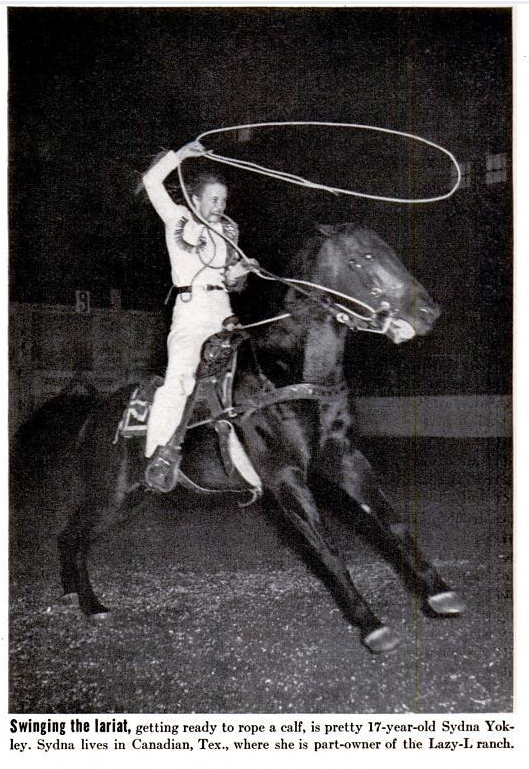


A nice write-up of her life here.
A 1977 retrospective feature here.

Posted By: Paul - Thu Apr 13, 2023 -
Comments (4)
Category: Animals, Contests, Races and Other Competitions, Regionalism, Sports, North America, Twentieth Century
Dead Opossum Design
Reported in the Los Angeles Times (June 3, 1980). Sounds like an urban legend to me. But maybe there really was a lady in Riverside who was matching her home furnishings to her dead opossum.
Posted By: Alex - Sat Apr 08, 2023 -
Comments (1)
Category: Animals, Telephones, Interior Decorating
Sparkie Williams, famous budgie
Sparkie Williams is apparently one of the most famous birds of all time, but I just found out about him.
Sparkie Williams (stuffed)
Some details about him from Animal Facts and Feats by Gerald Wood:

More details from Wikipedia:
The BBC's archive on Facebook has a video of an interview with Sparkie's owner, with stuffied Sparkie beside her.
Posted By: Alex - Sat Apr 01, 2023 -
Comments (1)
Category: Animals
Robin orders sparrow to be shot
Aug 1979: Frustrated by a sparrow that was chirping in his church when a guitar recital was going to be recorded, Rev. Robin Clark ordered the bird to be shot.I'm sure that, after that, no one made a sound during the recital.
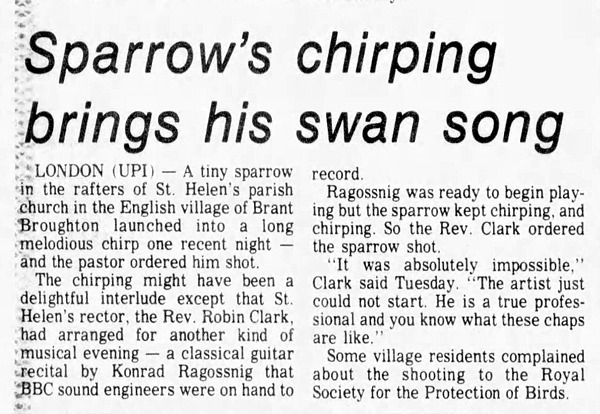
The Vancouver Columbian - Aug 8, 1979
I couldn't find a recording of the sparrow-death recital, but here's some music by Konrad Ragossnig.
Posted By: Alex - Fri Mar 31, 2023 -
Comments (3)
Category: Animals, Death, Music
Visit Gay’s Lion Farm
The Wikipedia page.A very detailed article on the place, with lots of photos.
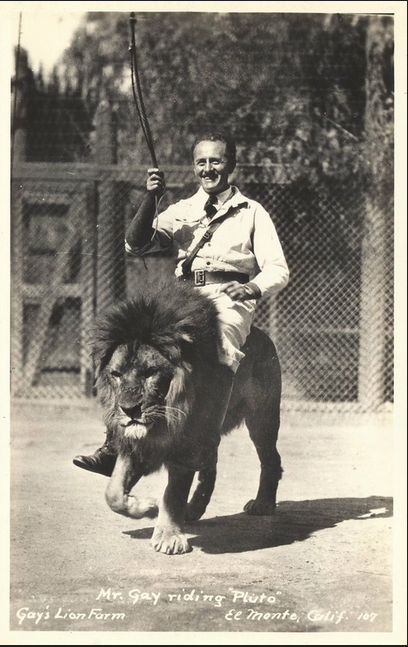
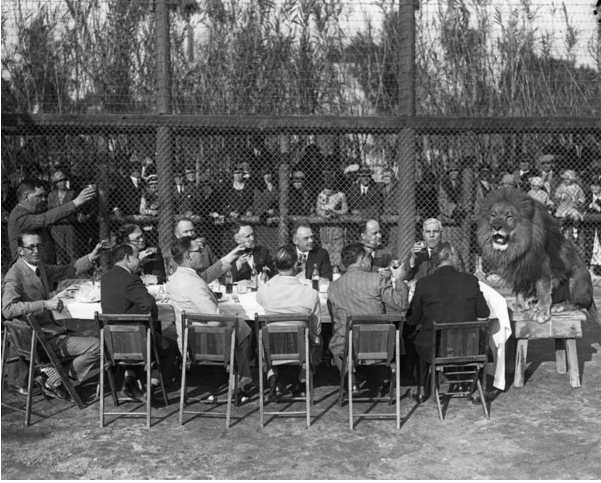
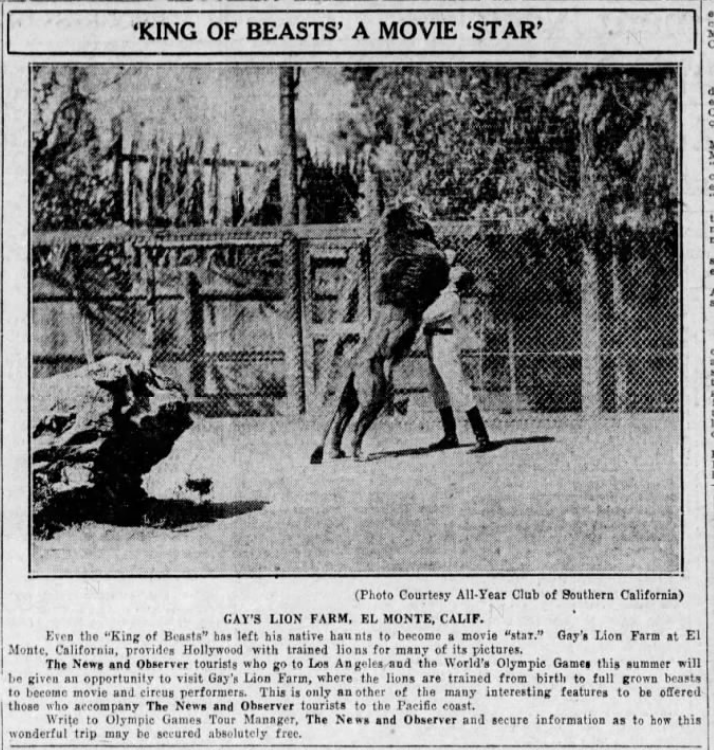
Posted By: Paul - Thu Mar 02, 2023 -
Comments (0)
Category: Animals, Eccentrics, Hollywood, 1920s, 1930s, 1940s
Wild Hog Hop
The sound effects make it special.Encyclopedia entry on the musician.
Posted By: Paul - Sun Feb 19, 2023 -
Comments (0)
Category: Animals, Music, 1950s
Win a Pony!
Maybe this 1950s contest was the inspiration for the famous episode of THE SIMPSONS where Bart won an elephant.A survey of newspaper records indicate the contest ran multiple times from 1952 to 1955. I wonder how many ponies were actually accepted and delivered?
But Roy and Dale could never cause any trouble, could they?

Posted By: Paul - Sat Feb 18, 2023 -
Comments (5)
Category: Animals, Awards, Prizes, Competitions and Contests, Television, Children, Cereal, Wild West and US Frontier

| Who We Are |
|---|
| Alex Boese Alex is the creator and curator of the Museum of Hoaxes. He's also the author of various weird, non-fiction, science-themed books such as Elephants on Acid and Psychedelic Apes. Paul Di Filippo Paul has been paid to put weird ideas into fictional form for over thirty years, in his career as a noted science fiction writer. He has recently begun blogging on many curious topics with three fellow writers at The Inferior 4+1. Contact Us |




